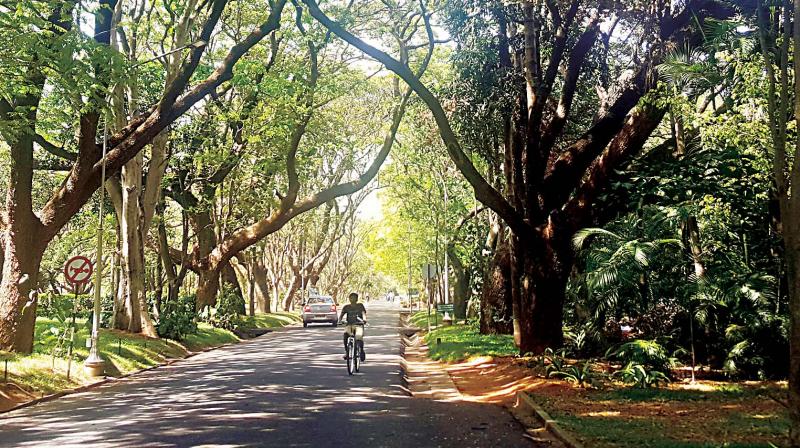The importance of being \'rooted\' Bengaluru\'s shrinking green spaces
Bengaluru, meanwhile, has a fast growing population, which brings its own requirements to the fore.

The green cover in an area is linked to changes in day temperature and tree planting initiatives in urban areas have been taken up by the Forest Department, municipalities and corporations of urban development departments of the state government for a long time.
Bengaluru, meanwhile, has a fast growing population, which brings its own requirements to the fore. Facilities need to be upgraded to meet these growing needs, from decongestion of traffic, urban health infrastructure, schools, roads, transport and so on. That we may have to sacrifice a large number of old trees is an unhappy consequence of this. Even if we were to plant more than one tree for every tree sacrificed for the expansion of infrastructure, we would still have to deal with big changes in their leaf surface area. Young seedlings take a while to grow and may need decades to become full-grown trees. First, the young sapling needs to be cared for until it is big enough to not fall prey to livestock, only then will it arrive at a stage where its foliage develops also.
Scientists across the globe are conducting extensive research with regard to mitigating the increase in temperature due to global warming. Big cities are expanding too, with concrete structures and even the space available on the side of the road is covered with tiles. This leaves very little space for trees to grow. Now concrete is a good absorber of heat. It is an equally good emitter of heat. As a result, the maximum temperature during the day goes up.
Research has found that temperature under shady trees can be between three and five degrees lower than in patches without trees. Young trees will take at least a decade to create a similar impact on lowering temperature.
In a fast growing metropolitan city like Bengaluru, old big trees are sacrificed day in and day out for expansion of infrastructure like Metro rails, roads etc and the impact of newly planted seedings is not appreciable in lowering the temperature. As a result the net maximum day temperature is on the increase and even nights are warmer for the reasons already explained i. e. due to the heat emitted by concrete structures.
Land is often acquired in big cities for linear infrastructure, so why don't we acquire land to grow trees, too?
Tree planting measures need to be planned atleast 10 years before old trees are sacrificed for development, if we want to fill the gap and keep the temperature constant, if not lower it.
It was in 1980-81 that the Forest Department took up tree planting measures in Bengaluru and a special division called the green belt division was created. Sri Neginhal was the first DCF posted there.U nder the guidance of his Conservator of Forests, late Sri Gaonkar, Neginhal mastered a technique of growing tall seedlings, from a variety of species. These he would grow in vacant areas, along the roads and on government premises within city limits. Later, the green belt division became Bengaluru urban division and similar works continued. By the mid-nineties, Bengaluru had become much more verdant. Later, BBMP was entrusted with the responsibility of tree management and they managed to maintain the tempo of tree planting. These are the trees being axed now and even more are proposed for extraction for development projects like the elevated corridor.
If we want to put a cap on day temperature in any developing city we should first take up large scale planting taking all future expansions into account. Also we should not cover pavements with tiles. Adequate space should be left for growing trees. The surface should not be fully concrete either as percolation of rain water is also necessary for trees to grow.
We have seen many trees get uprooted and damage life and property when there are strong winds. In the process of growing tall seedlings tap roots are killed. Trees growing on side roots fall with the heavy wind. It is therefore recommended to provide smaller seedlings where tap roots are intact for planting in Urban areas.
The writer is the Retd Principal Chief Conservator of Forests ( Head of Forest Force) Karnataka .

